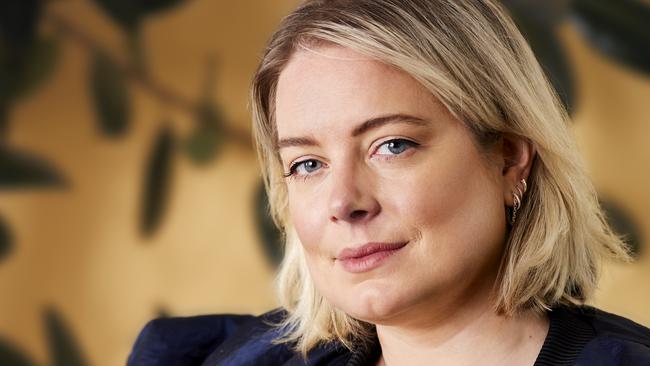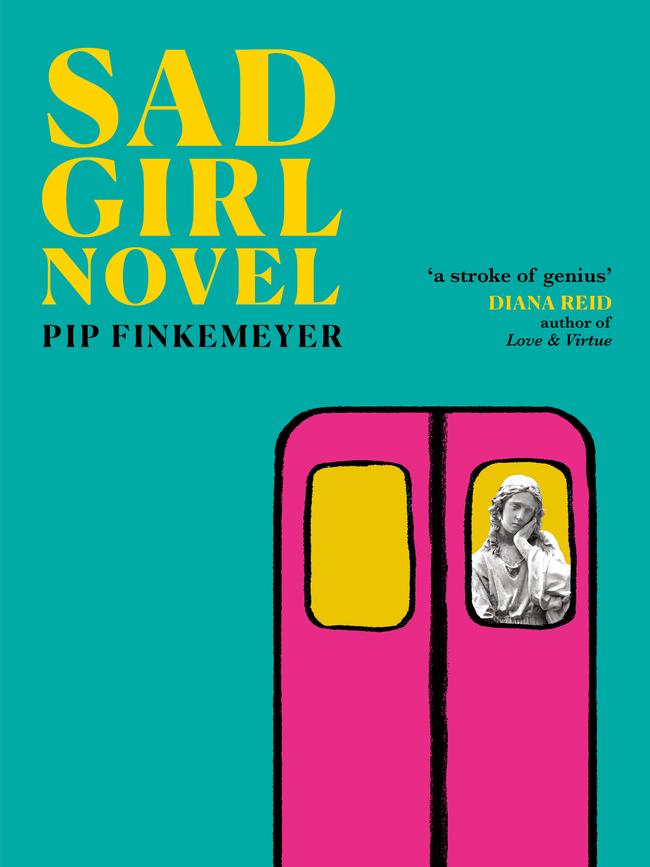There is no stopping the ‘sad girl’ novel
An Australian author enters the field with a 20-something character conscious of her privilege and self-pity.

Have you heard about the “sad girl” novel? If your answer is no, then this book probably is not for you. If, however, the genre is familiar and you happen to be a 20-something woman, then get your hands on Pip Finkemeyer’s debut work.
The Melbourne-based author’s debut book, Sad Girl Novel, is a wonderful and sometimes dizzying critique of a literary genre that has become extremely popular, for both good and bad reasons, in recent years.
Typically, “sad girl” stories feature a white, privileged, 20-something woman who struggles to find her purpose and battles with varying degrees of self-pity and self-obsession. Sally Rooney’s wildly successful Normal People is the best known example of the genre, while My Year of Rest and Relaxation by Ottessa Moshfegh, Cleopatra and Frankenstein by Coco Mellors and Sorrow and Bliss by Meg Mason also have tackled the trend.
The books’ themes have been criticised as leaving the reader frustrated by the characters’ inability to “get a grip”, but they also have been hailed as a “relatable” sign of the times.
Finkemeyer’s offering follows the adventures (if you can call a deep exploration into self-pity an adventure) of 27-year-old Kim Mueller, an Australian living in Berlin, who is trying to write a novel. Not just any novel, but a “sad girl” novel.
Kim has no real responsibilities other than her self-appointed “calling” to write a book, which she has not started; see her therapist, Debbie, who is sometimes a great help but mostly a terrible influence; and to intermittently travel on the U-Bahn rail network, where “terrible incidents” happen to her.
Kim is, however, acutely aware that nothing terrible has happened to her but rather feels as if she’s been cheated of some kind of destiny. “There was nothing concrete or physically wrong; there was only my perception of how life could or should be but wasn’t. I was objectively lucky, but the world still sucked.”

Kim is joined by two important sad-girl character tropes: the female best friend — in this story Bel — and the male love interest — Matthew. Kim meets Matthew on a work trip in New York after she decides she is destined for higher things than working an office job.
Matthew is an American literary agent and all-round dreamboat who sparks in her the desire to write a novel. For a couple of days, the pair frolic around New York in a loved-up bubble. That love grows not necessarily because of the bond between them, rather the male validation Matthew gives Kim to finally realise her dreams of writing a bestselling novel – about her misery.
Bel, on the other hand, is constant and stable. She is both a mother and historian, always offering Kim advice that is never taken. If the characters leave you with more questions than answers, do not fret — it is all part of Finkemeyer’s plan.
The writing is clever, hilarious, and frustrating. Readers might be forgiven for wanting to throw the book across the room given the at times unbearable amounts of self-pity and delusion expressed in the author’s characters (again, a reaction deliberately provoked by Finkemeyer). Says Kim at one point: “I wanted to be common, and at the same time part of me felt like I was secretly better than everyone else, but too humble to let it be known. I had main character syndrome, of course. Is it still called that if you literally are the main character?”
Finkemeyer here has expertly played the double agent. She has critiqued and poked fun at one of the most popular themes of modern literature, but also not completely written off the “sad girl” theme, giving her characters and storyline substance. In fact by writing this book, she has affirmed the Sad Girl genre’s worth, especially among women of a certain age and privilege.
Sad Girl Novel is wildly amusing, sharply relevant and as best-selling Sydney based writer Diana Reid (a sad girl novel expert) says, “a stroke of genius”. It is a hot book for this year — and its target audience is sure to appreciate its Instagrammable cover.
Alexandra Hill is a staff writer at The Australian.
Sad Girl Novel



To join the conversation, please log in. Don't have an account? Register
Join the conversation, you are commenting as Logout